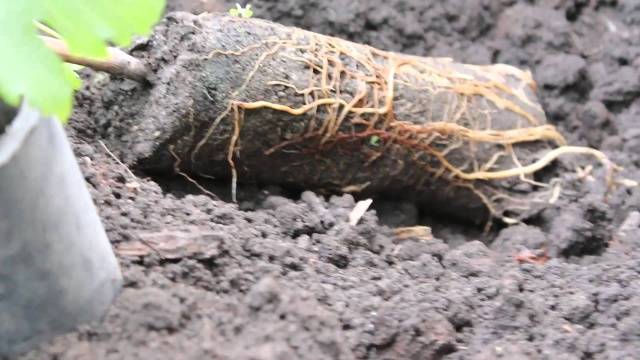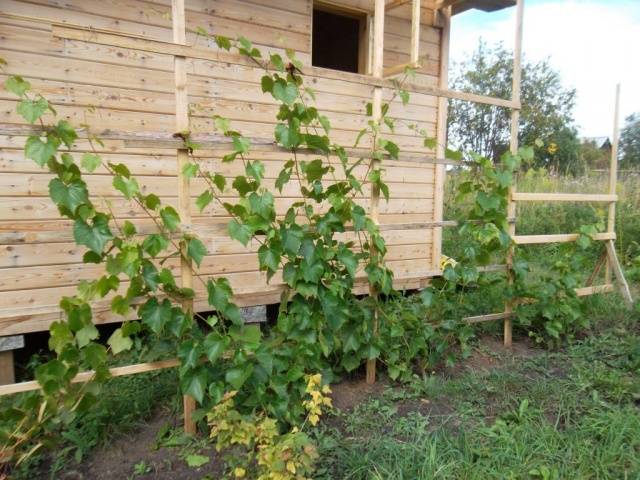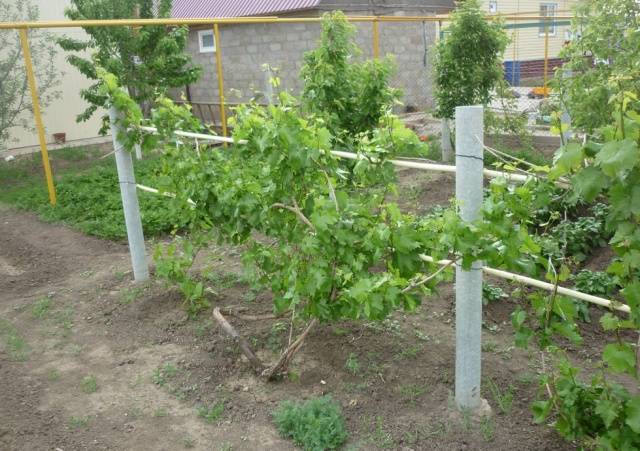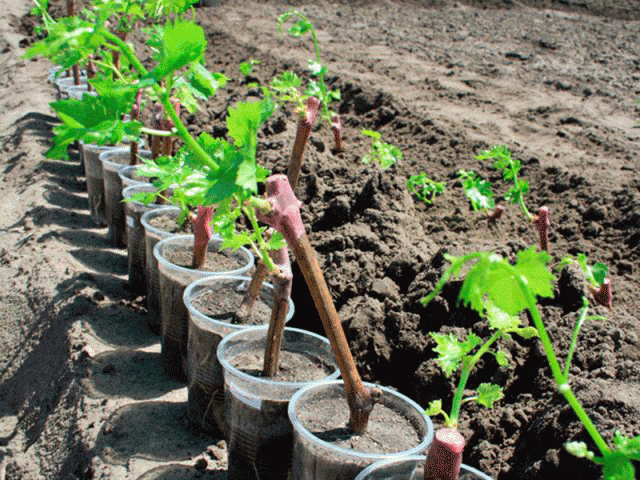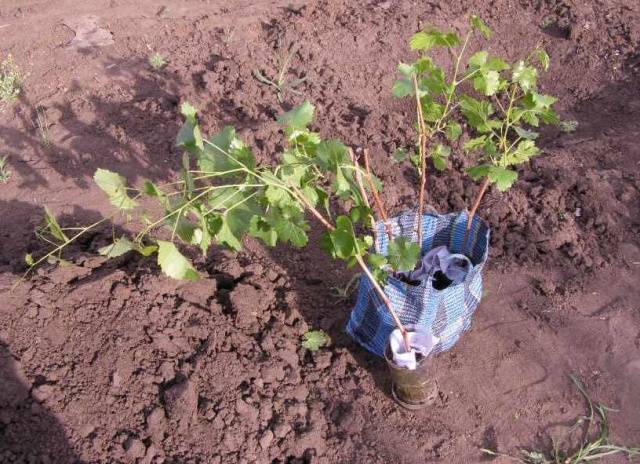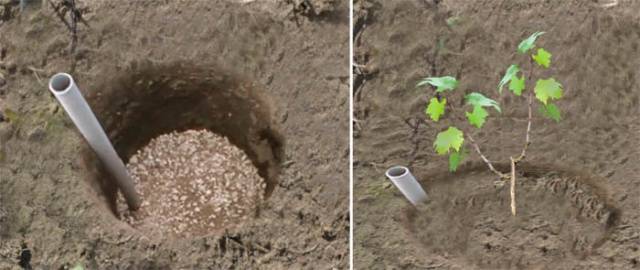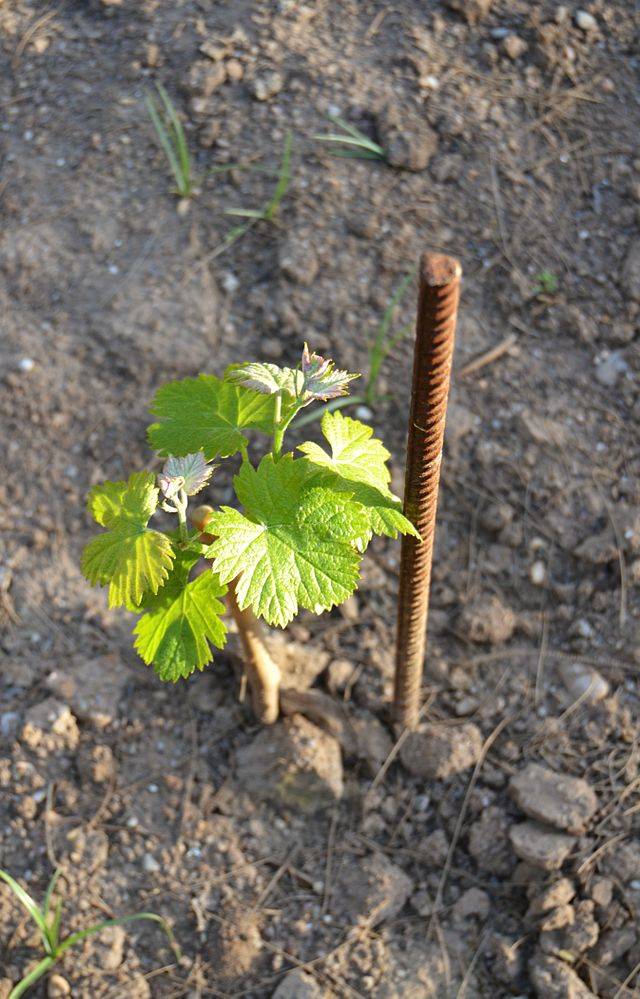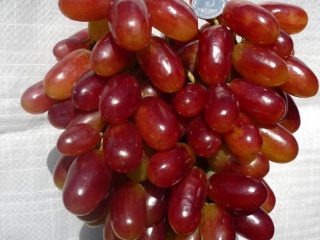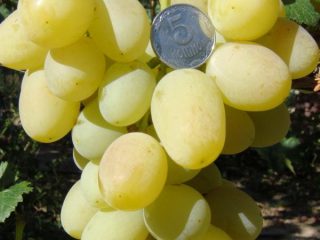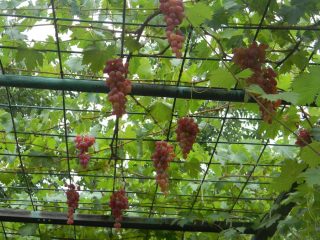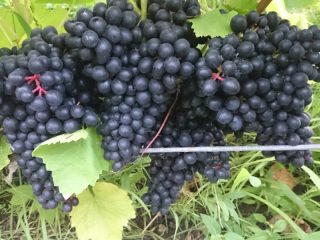Content
Grapes are a southern plant, so they love warmth and sunlight. The local climate is not very suitable for a heat-loving crop, so special attention should be paid to such important points as proper planting, care and shelter of the vine for the winter. Grape planting dates Each gardener determines it independently, but most experienced winegrowers say that it is better to do this in the fall.
What are the advantages of planting in the fall, as well as how to properly plant grapes on a plot in the fall - these issues will be addressed in the article.
When is it better to plant grapes: autumn or spring
Many experts recommend planting grapes in spring only for the reason that this way the plant will have more time to develop and take root before the harsh winter. However practice shows that the problem of seedlings freezing is easily solved by reliable shelter and deeper planting.
Autumn planting of seedlings has a number of advantages:
- In autumn, the ground is wetter, which is very important for young seedlings that need to take root. In the summer, the winegrower will have to water the young plants weekly to prevent them from drying out.
- Properly buried seedlings do not freeze in winter, because their roots are more than half a meter from the surface of the earth.But the grape seedlings planted in the autumn will be hardened, and subsequently the vine will be able to withstand frosts greater than -20 degrees.
- Autumn grapes will wake up earlier and sprout new shoots in the spring - the development of such seedlings is faster than those that were planted in the spring.
- Various exhibitions and fairs where valuable grape varieties are sold take place in the fall. The gardener will have an excellent opportunity to choose the appropriate variety from a large selection.
When to plant grapes in the fall, each owner decides independently. Most summer residents do this from mid-October until the onset of severe frosts. The general rule is that there must be at least 10 days left before the actual winter frost so that the grapes have time to take root in the new location.
How to plant grapes in the fall
Usually Grape seedlings are planted in autumnhaving a well-developed root system and several buds. The planting itself is practically no different from spring, the only thing is that the grapes will need to be properly insulated and watering completed 10-14 days before the expected frost.
Where to plant grapes
The choice of place for planting seedlings is based on the heat and light requirements of the plant. It is better to plant grapes on the southern side of the plot; the eastern or western side is also suitable.
To protect the plant from severe cold, you should not plant it in lowlands or at the bottom of ravines - this is where the air temperature drops the most. It is better to choose southern slopes, which could reliably protect the plant from cold winds and high humidity.
In this case, choose the western or southwestern side for planting. Throughout the day, the structure will heat up in the sun, and in the cool evening and at night it will begin to give off the accumulated heat to the vine.
Vineyards like nutritious, loose soil. Black soil is most suitable for planting seedlings, but, in principle, if you fertilize the hole well, you can plant grapes in any soil. The only thing worth considering when choosing a landing site: sandy soil freezes more strongly in winter and dries out faster in summer. You need to make a clay castle in the sand at the bottom of the hole, which will prevent the leakage of water and nutrients. And also, such vineyards are better covered for the winter and young plants are planted a little deeper.
How to select and prepare grape seedlings for autumn planting
Proper cultivation of grapes begins with choosing a healthy and strong seedling.
A good autumn seedling must meet the following criteria:
- have a brown trunk up to 50 cm long;
- have one or more green shoots of any length;
- the root system should be well developed, consisting of upper and lower root nodes;
- the roots themselves reach a length of about 15 cm;
- when cut, the root should be “alive”, white and moist;
- a good quality seedling is packaged in clay protection - the roots of the grapes are enveloped by wet clay;
- seedlings should not be in the sun;
- leaves and young shoots have a rich green color (pale shade indicates that the plant is a greenhouse plant that has not been hardened).
When grape seedlings are purchased, they need to be planted as quickly as possible. Preliminarily carried out preparation of planting material, for grapes it is as follows:
- First, the grape seedlings are placed in cold water and soaked for 12-24 hours. It is allowed to add growth stimulants to the water, but many experts argue that this will negatively affect the development of the vine in the future.
- Now you need to remove the seedling from the water and inspect it. Using sharp scissors, trim the green shoot, leaving 3-4 eyes.
- The upper roots are cut off completely, and those located in the lower node are only slightly shortened to stimulate growth (cut by 1-2 cm).
- To protect grapes from fungal infections, the plant is treated with any fungicidal agent suitable for vineyards (for example, Dnoka).
Now the seedling is ready for planting before winter.
Preparing the soil and planting grapes
To prevent the capricious plant from freezing in the cold winter, the grapes need to be planted deep enough. The average dimensions of the pit for planting seedlings are 80x80x80 cm, you can reduce the diameter of the pit, but its depth should remain at 0.8-1 meters.
The distance between adjacent vines should be at least a meter, but if possible, it is better to increase the gaps to two meters. So, at the selected location, dig a hole of the specified size and perform the following actions:
- 5-10 cm of crushed stone, pebbles or broken bricks are poured at the very bottom - this is a drainage layer. Drainage is necessary to protect the roots from high humidity.
- A pipe is installed in the drainage, the end of which will rise above ground level when the hole is buried. The pipe is placed on the side, and it is needed in order to feed the grapes directly to the roots at any time of the year.
- The next layer is nutrient soil or black soil. The thickness of such a pillow is about 25-30 cm. Humus or compost is suitable as a nutrient layer: about eight buckets of fertilizer are poured into each hole.
- Mineral fertilizers are poured on top: 0.3 kg of superphosphate and potassium fertilizer, three liter cans of wood ash. It is necessary to mix fertilizers with the soil, going deeper by 10-15 cm.
- The nutrient layer is covered with a thin layer of chernozem so that the roots of the grapes do not burn from direct contact with fertilizers - 5 cm is enough.
- In the remaining 50-centimeter hole, a small mound of soil is made. Grapes are planted on it and the roots are carefully straightened, placing them along a cone.
- The hole is gradually covered with earth to the point of growth on the seedling. Lightly compact the soil around the grapes. At this point, the landing can be considered complete.
- Immediately after planting, the grapes need to be watered, spending 20-30 liters per bush. When the top layer of soil dries, it must be loosened.
Aftercare
The planting of grapes in the fall is completed, now the most important thing is to prepare the seedlings for wintering. Apart from watering, the grapes at this stage do not require any care; only with the onset of real frosts should the seedlings be covered.
In warm regions, a simple earthen mound over the grapes is enough; its height is about 30-50 cm. In harsher climates, grapes are insulated more thoroughly, wrapping the shoots with plastic film, putting them in earthen tunnels, covering them with spruce branches or sawdust.
Anyway Do not rush to cover, because this can harm the grapes. If the temperature is above zero, the seedlings may dry out; in addition, they are threatened by insects and rodents in the ground. Experts advise covering the vine only after the first frost so that the plants undergo some hardening.
Everyone decides for themselves: to plant grapes in spring or autumn. This article lists all the advantages of autumn planting. To better understand all the nuances of this event, you can watch the video:



